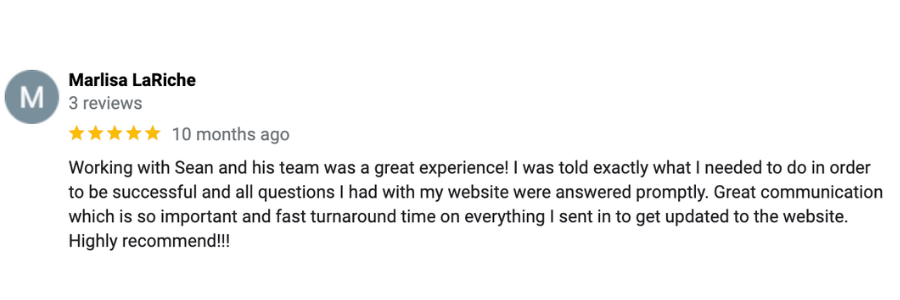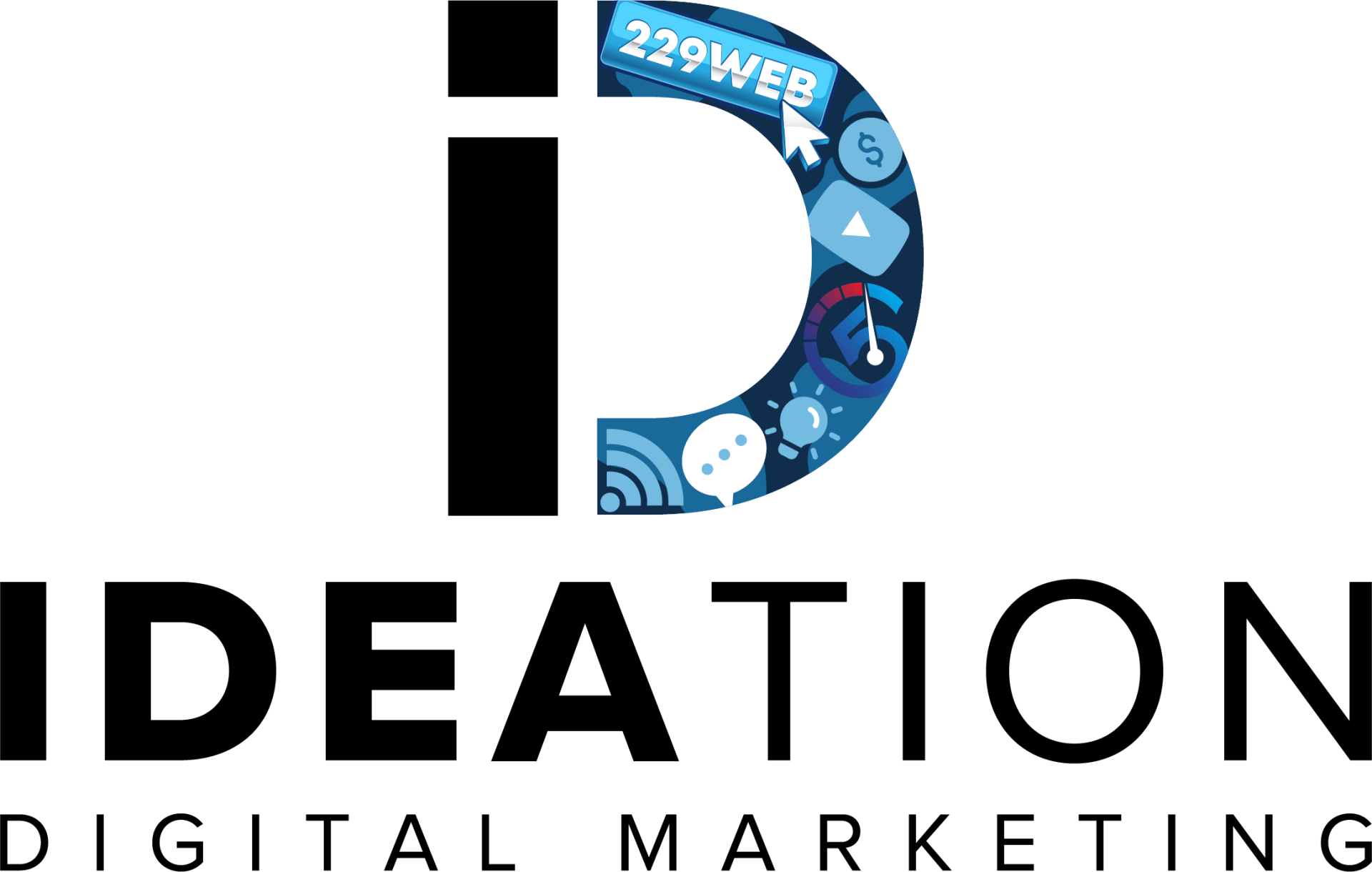Ideation Digital specializes in strategic marketing services that drive results for your business or organization, let us show you how our SEO Services can help grow your business on auto-pilot.
Is your online presence strong but your sales numbers remain disappointingly low?
Do you feel invisible online and know it’s affecting your sales growth?
Wondering if your business website actually brings in any customers?
Invested in online marketing but not seeing any increase in sales or customer inquiries?
The problem is there is more competition than ever for attention online and having a "good enough" online presence isn't good enough to get you customers anymore.
At Ideation Digital marketing we focus on building websites and SEO marketing programs that get you customers and leads, because why else would you invest in your small business marketing?
We understand the business saving impact of knowing you are getting consistent online leads from your website and online marketing. We are small business owners too.
That's why we only create online marketing that is optimized to produce sales and results. A.I. powered organic and comprehensive marketing systems that leverage the power of A.I. to create an online presence that actually makes the phone ring.

Want to discover how much not having an A.I. powered organic marketing system is costing your business already?
Get our digital marketing cheat sheet, made from a decade of experience in the industry, and customized for your business with exact steps to get consistent leads from your online marketing and finally feel like your online marketing investment is worth it!
How It Works
1. Analyze and Create a Strategy
We audit your existing marketing and needs, and help you figure out where your best opportunities are and agree on a plan that fits your goals.
2. Fast Implementation
Based on your strategy, we create your website and other marketing assets within a week so that you get leads FAST, and we offer unlimited editing so that your online presence always looks its best.
3. You Get Leads
Our expert team implements effective online marketing strategies to bring in leads and improve your local visibility, putting you in front of the right people at the right time so they actually reach out.
4. We Make Sure You Keep Getting Leads
We continue to monitor and actively manage your website, SEO, and digital marketing campaigns, allowing you to focus on your business while it shines online.
Here's what you get working with us:
Trust
We only recommend products and services that align opportunities with your goals. We focus on results for your business first.
Freedom
We manage all campaigns and assets for you. Need an update? No problem, send us an email, a text, or we will even create you a slack channel.
Growth
We don't just build websites, create SEO plans, and run ads for online marketing campaigns, we create comprehensive a.i. powered organic and paid marketing programs that bring you leads and customers.
See What Small Business Owners are Saying About Working with Ideation Digital








Email Marketing Analytics: A Complete Guide To Reporting
Deep in the veins of every successful
email marketing strategy pulses the heart of robust analytics and reporting. Welcome to the whirlwind world of Email Marketing Analytics - a realm where data is king, conversion secrets are unearthed, and numbers paint thousand-word pictures about customer behavior. Whether you're a seasoned veteran or new to the landscape, this comprehensive guide will dissect the science of effective reporting and solidify your understanding from concept to execution. Sail with us as we navigate through this vibrant vortex of insights, ensuring you harness its power to uplift your business strategy and execute impeccable data-driven email campaigns. Buckle up; it's going to be an illuminating journey into the exciting universe of Email Marketing Analytics!

Our article on "Email Marketing: Analytics and Reporting" provides a comprehensive guide on how to effectively analyze and report on your email marketing campaigns. It covers important metrics such as open rates, click-through rates, bounce rates, and unsubscribe rates. Additionally, it offers insights on measuring deliverability rates, analyzing email journeys and automations, tracking content performance, and understanding subscriber activity. By following the best practices outlined in our article, you can gain valuable insights to optimize your email marketing strategies and improve campaign performance.
Importance of Analytics in Email Marketing
In the world of email marketing, data is king. And analytics play a vital role in understanding how your emails are performing and what can be improved upon to achieve better results. By analyzing the metrics provided by email marketing analytics, marketers can make strategic decisions, improve audience engagement, and drive revenue growth.
For instance, monitoring data such as click-through rates, open rates, bounce rates, and conversion rates can provide valuable insights into the type of content that resonates with audiences, the timing and frequency of email campaigns, and whether certain segments of subscribers require different messaging.
Analytics also enable businesses to track the success of their campaigns across various metrics while highlighting areas where optimization is needed. But without effective analytics tools, these benefits are impossible to achieve.
Essential Analytics Tools for Email Marketing Success
From free options to paid services, there is a variety of analytics tools available today designed specifically for email marketing purposes. So, what are some essential analytics tools for email marketing success?
Think of it like running a restaurant- you need access to quality ingredients (in this case tools) to offer your customers (subscribers) what they want and keep them coming back for more.
Firstly, email marketing platforms like Constant Contact, Mailchimp, ConvertKit, ActiveCampaign offer built-in analytics features that enable users to track key performance indicators (KPIs) such as open rates and click-throughs on each campaign sent.
Secondly, advanced tracking tools such as Google Analytics or Clicky offer additional functionalities beyond built-in email platform features. They enable businesses to track user behavior on landing pages reached through their emails.
| Tool | Key Features |
|---|---|
| Constant Contact | Built-in analytics with real-time data monitoring. Track KPIs including clicks, opens & conversions. |
| Mailchimp | Dashboard-like interface with detailed email analytics & compare campaigns feature |
| ConvertKit | Reports and automation features to optimize subscriber engagement |
| ActiveCampaign | Advanced tracking of visitor data, pre-built reports, customizable metrics |
| Google Analytics | In-depth web analytics platform including event tracking, custom audiences and mapping user journeys |
| Clicky | Real-time tracking- watch user behavior on your site as it happens. |
Thirdly, tools such as Litmus help marketers take their email analysis a step further by testing email content across multiple devices and clients to ensure compatibility.
When it comes down to it, the best analytics tools for your business will depend on both your budget and specific needs. Research each tool in-depth to decide which is best suited for reaching your goals.
Now that we’ve covered some essential analytics tools for email marketing success let’s dive into advanced tracking tools you can use to boost your email campaign performance.
Advanced Tracking Tools
As email marketing continues to be the backbone of many businesses' digital strategies, staying on top of your email performance has never been more crucial. That’s why it’s necessary to have access to advanced tracking tools that allow for real-time monitoring and analysis of emails sent. There are numerous free and paid email tracking software options available that can help optimize your email marketing efforts.
One popular option is EmailAnalytics, which provides a visual dashboard that enables users to analyze their team's email activity in real-time across Gmail and Outlook. Available as a paid service, the tool offers a suite of features such as viewing detailed statistics on open rates, replies, and total emails sent. Users can also set up notifications for not-yet-replied-to emails or overarching goals such as reaching a certain number of sales from email campaigns.
Effective Conversion Measuring Tools
Once your emails have been opened and read, it is equally essential to measure the impact they have had on generating conversions or driving traffic to your website. Here, conversion measuring tools come into play - each providing unique insights into how different aspects of email campaigns may have performed.
One such tool is called Leadfeeder - a website visitor identification tool that bridges the gap between email and website activity. It helps identify companies that visit site pages after email clicks and offers deeper insights into company identity, page visits made by individual visitors and how long they stayed there.
Other effective conversion measuring tools include Right Inbox, SalesHandy, Mailtrack, Streak, MailTag, Atomic Email Tracker and MailTracker by Hunter; each with unique features tailored towards specific business needs.
For instance:
- Right Inbox provides click-tracking, reminders, sequences and scheduling features.
- SalesHandy offers unlimited email tracking, scheduling functionalities and CRM integration for sales teams.
- Mailtrack offers engagement information via mobile compatibility.
- Streak integrates CRM into Gmail inboxes for relationship management.
- MailTag provides overall open rates, link-click rates, automated follow-ups and real-time notifications.
While there is no one-size-fits-all solution when it comes to conversion measuring tools, testing various platforms gives an understanding of what works best for your particular business needs. For instance, a B2B company might find features like lead generation or advanced contact data more valuable than a small retail business that focuses on bulk campaigns. In contrast, the latter would most likely benefit from features like personalization and drip campaign functionality to increase sales.
To put this into context, imagine you are running a B2C clothing brand that caters to millennial audiences. Your primary goal could be driving traffic towards exclusive online discounts and using personalized email templates that use customer data such as past browsing history to create these offers. With insights derived from effective conversion measuring tools, you may cater to campaigns with successful click-through rates or high engagement levels which can translate into greater revenue in actual sales figures.
It is vital to implement suitable tracking tools and identify key performance indicators (KPIs) that enable executives to determine whether email marketing campaigns are successful. The next section highlights how KPIs help teams identify areas of success or failure in email campaigns while reviewing metrics that relate back to broader marketing goals achieved through effective email marketing strategies.o
- In order to measure the effectiveness of your email campaigns, it is important to utilize conversion measuring tools. One such tool is Leadfeeder, which helps identify companies that visit your website after clicking on your emails and provides insights into their behavior. Other useful conversion measuring tools include Right Inbox, SalesHandy, Mailtrack, Streak, MailTag, Atomic Email Tracker, and MailTracker by Hunter.
These tools offer a range of features tailored to specific business needs. For example, Right Inbox provides click-tracking, reminders, sequences, and scheduling features. SalesHandy offers unlimited email tracking, scheduling functionalities, and CRM integration for sales teams. Mailtrack offers engagement information through mobile compatibility. Streak integrates CRM into Gmail inboxes for relationship management. MailTag provides overall open rates, link-click rates, automated follow-ups, and real-time notifications.
It is important to test different platforms to find the best fit for your business needs. For example, B2B companies might find lead generation or advanced contact data more valuable, while small retail businesses focusing on bulk campaigns may benefit from personalization and drip campaign functionality.
By utilizing effective conversion measuring tools and understanding key performance indicators (KPIs), executives can determine the success of their email marketing campaigns. For instance, a B2C clothing brand targeting millennials could use KPIs such as successful click-through rates or high engagement levels to drive traffic towards exclusive online discounts. With the insights gained from these tools, businesses can see greater revenue in actual sales figures.
Implementing suitable tracking tools and identifying KPIs can help teams identify areas of success or failure in email campaigns and align them with broader marketing goals achieved through effective email marketing strategies.
Despite the importance of email marketing analytics, it can be challenging identifying KPIs that measure success effectively. A unique characteristic of email marketing is the variety of data sets available for analysis (e.g., open rates, click-through rates, unsubscribes, etc.), which underscores the critical need to select KPIs that align with campaign goals.
Key Performance Indicators (KPIs) are metrics used to track specific performance outcomes and help reveal whether an enterprise or organization is on course to achieving specific objectives. For email marking, setting KPIs typically involves outlining campaign objectives and aligning them with relevant performance metrics.
With that in mind, let's explore how to track open and click-through rates in this next section.
Identifying Key Performance Indicators in Reporting
Understanding Conversion and Engagement Metrics
Email marketing campaigns are only effective when their open, click-through, and conversion rates are acceptable. As a marketer, tracking these metrics is essential because it helps you determine which emails are generating better leads than others.
For instance, if an email has a high open rate but a low click-through rate (CTR), this could indicate that the subject line was excellent in grabbing attention but that the content within wasn't persuasive enough to prompt further action.
But what about traditional metrics like ROI or unsubscribe rates? Well, while they remain crucial measures of email campaign performance, examining opens and clicks can provide deep insights into how your audience interacts with your brand.
Now we've established the importance of engagement metrics. Let's delve deeper into advanced strategies showcasing different tools and practices for optimized email reporting.
01
According to Litmus’ 2020 State of Email, Fall Edition, companies using email marketing are seeing an average return on investment (ROI) of 38:1.
02
The same report claims that segmented email campaigns have an open rate that is 14.32% higher than non-segmented campaigns.
03
Data from HubSpot shows that active engagement strategies like personalization can increase the click-through rates of emails by an impressive 14%, and conversion rates by as much as 10%.
Advanced Strategies for Optimized Email Reporting
Gauging success through various engagement metrics requires more than just simple guesswork. Instead, consider utilizing advanced strategies to take your email reporting to new heights.
Think of email marketing reporting as baking; getting your recipe right involves specific ingredients and techniques to achieve the perfect output.
One feature you should consider implementing is heatmaps in your email campaign analysis. These visual representations showcase user behavior from page by outlining which areas received the most interaction from users. This valuable information provides more insight into what works well with your campaign's successful conversion path.
Another critical strategy is personalization within email content. While curation might require extra work for marketers in terms of gaining data for customer preferences, tailoring solutions according to customers interests is an effective way to drive clicks and conversions.
Moreover, another excellent tactic is incorporating calls-to-action (CTAs) throughout emails gradually reducing any perceived friction points between the user and purchase or sign-up intent. By providing clear-cut instructions on what needs to be done next, consumers feel less confused on what to do next.
While these strategies are effective, one must also consider the dangers of over-reliance on metrics. Focusing solely on metrics could lead to skewed data interpretation, thereby hindering or misdirecting company strategy.
If you want to reap desirable returns from email campaigns, understanding essential conversion and engagement metrics is crucial, along with advanced strategies that provide more insight into user behavior.
Leveraging A/B Testing for Improved Results
Email marketing is a highly effective strategy in driving customer engagement and selling products or services. However, without accurate metrics, it's challenging to gauge its effectiveness. Thus, measuring and analyzing email performance through analytics tools is crucial in making data-driven decisions that can optimize campaigns. Two critical components of this process are leveraging A/B testing and tracking subscriber activity.
Tracking Subscriber Activity and Engagement for Insightful Reporting
A/B testing involves creating two distinct versions of an email campaign and comparing their performance. It allows marketers to experiment with multiple elements like subject lines, CTAs, email design, copy, and offers in each version to determine the most effective combination.
For example, a company may send one version of an email to 50% of their recipients and another to the remaining 50%. After analyzing the results, they can conclude which version performed better based on open rate, click-through rate (CTR) or conversion rate. Once a winning variant has been identified, the marketer implements it as the official campaign moving forward.
Leveraging A/B testing for email campaigns can lead to improved engagement rates and conversions while at the same time providing valuable insights into what works best for customers.




